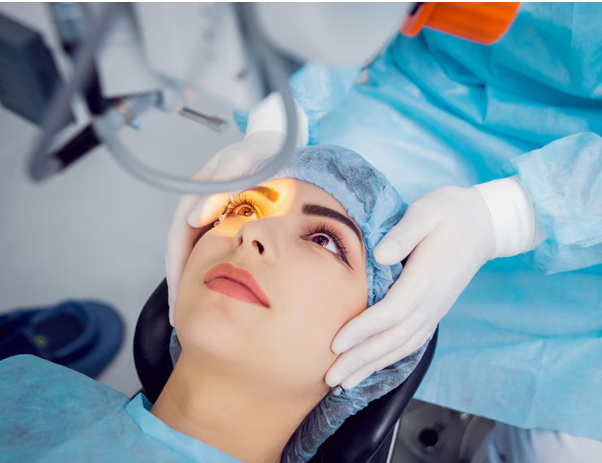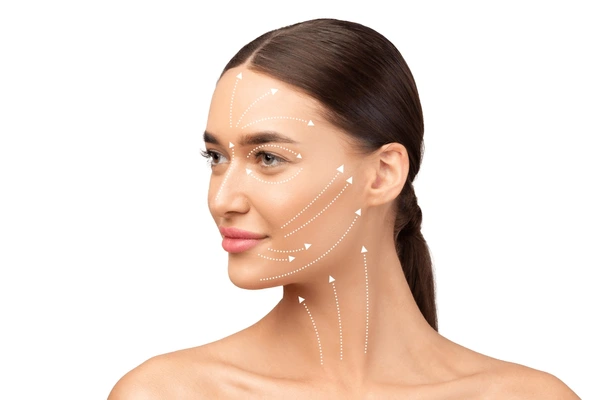
For many people dealing with vision issues such as nearsightedness, farsightedness, or astigmatism, LASIK eye surgery has become a highly appealing solution. When performed by experienced Sydney ophthalmologists, LASIK offers an effective and safe way to correct vision and reduce or eliminate the need for glasses or contact lenses. Understanding how the procedure is carried out and what safety measures are involved can ease concerns and help patients make informed choices.
What Is LASIK Eye Surgery?
LASIK (Laser-Assisted In Situ Keratomileusis) is a type of refractive eye surgery that reshapes the cornea to correct vision problems. The cornea helps focus light onto the retina, and any irregularities in its shape can cause blurred vision. LASIK addresses these issues using laser technology to improve how the eye refracts light.
When choosing LASIK eye surgery in Sydney, patients benefit from access to advanced equipment and skilled ophthalmologists who are well-versed in both traditional and bladeless LASIK procedures.
The Role of Sydney Ophthalmologists in LASIK
Ophthalmologists are medical doctors specialising in eye and vision care. They are trained to perform delicate surgeries, including LASIK, and their expertise ensures that the procedure is tailored to the individual needs of each patient.
In Sydney, ophthalmologists undergo rigorous medical and surgical training, often supported by continued education and certification by recognised Australian medical boards. This ensures a high standard of care, especially for surgical procedures that require precision and customisation.
The LASIK Procedure: Step-by-Step
Patients who choose LASIK eye surgery in Sydney typically undergo the following process:
Comprehensive Eye Examination

Before recommending LASIK, your ophthalmologist will conduct a detailed eye assessment. This includes checking corneal thickness, pupil size, eye pressure, and mapping the cornea to ensure you are a suitable candidate.
Preparation and Anaesthetic
On the day of surgery, numbing eye drops are applied. Patients remain awake during the procedure but feel no pain. The eye is gently held open using a speculum.
Creating the Corneal Flap
Using either a microkeratome (blade) or a femtosecond laser, the ophthalmologist creates a thin flap in the cornea. The flap is then gently lifted to expose the underlying corneal tissue.
Reshaping the Cornea
A cool ultraviolet laser (excimer laser) is used to precisely reshape the cornea, correcting the refractive error. The amount of tissue removed depends on the degree of vision correction required.
Repositioning the Flap
Once the cornea has been reshaped, the flap is laid back in place where it adheres naturally without the need for stitches.
Safety Measures and Technology
Sydney ophthalmologists prioritise patient safety by using modern diagnostic tools and computer-guided lasers. Here are some of the safety features integrated into the LASIK process:
- Wavefront technology: Allows for highly customised treatments based on detailed maps of the eye’s surface.
- Eye tracking systems: Ensure that the laser remains accurately aligned with the eye, even if the patient moves slightly.
- Bladeless LASIK: Many clinics now use femtosecond lasers instead of blades to create the corneal flap, increasing precision and reducing risks.
These technological advancements, paired with expert surgical techniques, have made LASIK one of the most successful and safest elective surgeries available today.
What to Expect After LASIK Surgery
Recovery from LASIK is relatively quick. Most patients notice improved vision within 24 hours, although it may take a few weeks for the eyes to stabilise completely. Patients are typically advised to:
- Avoid rubbing their eyes
- Use prescribed eye drops to prevent infection and inflammation
- Wear protective eyewear while sleeping for the first few nights
- Avoid swimming and strenuous exercise for at least a week
Follow-up appointments with your Sydney ophthalmologist ensure the healing process is on track and allow for any concerns to be addressed promptly.
Benefits of LASIK Eye Surgery
Choosing LASIK eye surgery in Sydney offers several advantages:
- Rapid visual recovery
- Minimal discomfort and no stitches
- Long-lasting results
- Reduced reliance on glasses or contact lenses
- Customisable treatment plans tailored to individual eye conditions
Most importantly, when performed by skilled Sydney ophthalmologists, LASIK offers a very high success rate with a low incidence of complications.
Who Is a Good Candidate?
Not everyone is suitable for LASIK. Ideal candidates typically:
- Are over 18 years of age
- Have stable vision for at least a year
- Do not have eye conditions such as keratoconus or severe dry eye
- Are not pregnant or breastfeeding
- Have a healthy cornea and adequate corneal thickness
Your ophthalmologist will help determine your suitability based on a thorough assessment.
Conclusion

LASIK is a transformative procedure that can significantly enhance quality of life for individuals with refractive vision problems. With modern advancements and the expertise of Sydney ophthalmologists, the procedure is both safe and effective. Choosing LASIK eye surgery in Sydney means benefiting from world-class technology, experienced professionals, and a commitment to personalised patient care.
If you’re considering LASIK, schedule a consultation with a trusted Sydney clinic to learn more about your options and what you can expect from the procedure.






